STUDIO
Welcome to my audio/music production studio set-up. I used to have a lot more gear that included plenty of analogue devices, I lately decided to try a new setup that would incorporate a DAW, although to date the vast majority of my music was written without one, directly on a synthesizer and using an incorporated sequencer. I wrote my first works for string instruments when I was 6 (1978) and continued to do so until I started playing the piano (1987). After that, it was my instrument of choice for composing, for quite a few years (1987-1991). During that time, I wrote many solo pieces for piano and also my first theatre play soundtrack (1989). In 1991 my best friend was gifted a Casio CT 470 for his birthday and, on that keyboard, I wrote my first electronic music album and my first electronic soundtrack for a theatre play (The Fisher King) performed by the Thespis Theatre in Timisoara (1992). I could not afford a synthesizer at that time, even less a workstation, so I wrote a few more complex works on a another friend’s keyboard (Korg X3), a birthday gift as well. Since my birthday gift never came in the form of a synth, I sold everything I had and I purchased my first workstation, Roland XP-80, a masterpiece that was never really dethroned by any other instrument in its class and it can still be relevant today in a budget studio set-up. It took a few years before I mastered that instrument but it was well worth it as during that time I wrote countless hours of music in many genres and styles starting from classical-orchestral, film and theatre to pop, jazz, rock, ethno and fusion. For a short while I used a Korg X5 for some of its founds in theatre music. I always wanted the best possible money could buy, so I got my Fantom X8 and VS 2480 DVD in 2005 and never looked back ever since. That was my portable studio that I needed for my projects then. However, during that time I started writing more and more music for acoustic instruments and since 2006 I did mostly that until recently, although all the film and all of the commercial music I still wrote on the Fantom X8. Now I decided to return to my studio music so I was quite excited to learn that Roland was putting out on the market a new incarnation of it, the Fantom 8. To my utter disappointment, this was mostly skillful but false advertising and after Roland Europe said they have no intention of adding back the features they made vanish for no good reason, I decided to move to Korg Kronos, the absolutely ONLY other workstation on the market that could rival Fantom 8, although it is technology almost a decade old. I also got the Roland Integra 7 for those unbelievably excellent sounds so I could have a hybrid that closely matches what I need in conjunction with Presonus Studio One. I kept my MXL mics so far and got a new Presonus mic in the studio kit that came with the AudioBox 96 USB. Now I am transitioning to a DAW-centered solution although I still love what my VS2480 can do.


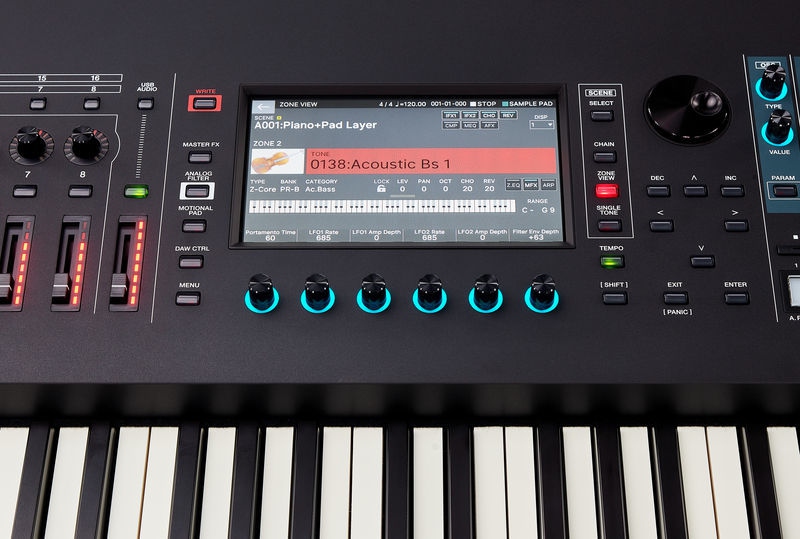
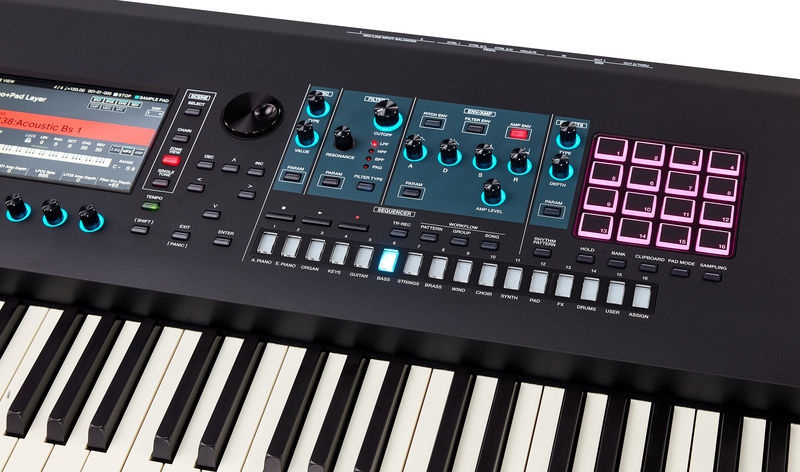
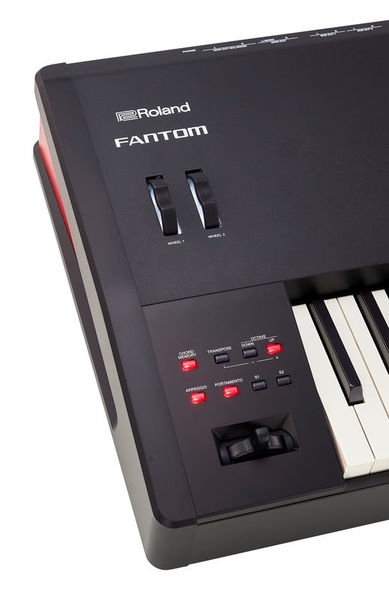
Roland Fantom 8 (NOT recommended)
Could have Roland actually ask the market what it desires before rolling out this “thing”? The so-called “workstation” should have been a blast, surpassing Korg Kronos and establishing itself as the King of All Workstations to date. Instead, it is a sorry excuse for everything is not although it promised to be. Now don’t get me wrong, it is not like everything is bad with it but man, the missing features… those are a major bummer. I love the keyboard and the many features but the disappearance of the linear sequencer along the fact that it only allows for 32-measure phrases to be recorded while lacking a simple undo button and allowing only two time signatures (3/4 & 4/4) is the deal breaker for me. I do NOT recommend this product to any serious composer and this is for the first time in 30 years of using Roland products that I say anything of this sort. Other than that, an excellent but very expensive addition to a DAW-based studio although at the same price you can get much better business with either Korg Kronos or a ton of software synths and VSTs for you DAW.
- 88 PHA50 weighted keys with hybrid wood and plastic construction, touch sensitivity and aftertouch
- Zen-Core sound generator with V-Piano Technology
- 16 programmable pads
- Scenes: 128 Scenes x 4 Banks
- Polyphony: 256 (Zen-Core), unlimited (V-Piano)
Presets: Over 3500 tones, over 90 sets of drums / Analog Filter / LCD Touchscreen Display / 128 LFO
Types of effects:
- 90 Multi-effects, 8 x Chorus, 6 x Reverb, 6 x Small Reverb, Master EQ, Master Compressor
- Includes Arpeggiator, Rhythm Pattern, Chord Memory
- Sequencer on 16 tracks Limited at only 32 bars, only two time signatures (3/4 and 4/4), no linear sequencing, no undo button, does not compare to a DAW so it is quite useless since you must connect it anyway to a DAW
- Sampling: 16-bit linear, 44.1 / 48kHz, WAV / AIFF
Controls:
- Pitch Bend / Modulation Lever
- Assignable Switch x 2 (S1 / S2)
- Control Knob x 8
- Slider x 8
- USB Audio Slider
- Wheel x 2
- Function Knob x 6
- Sound Modified Knob x 11
- 4 x 4 Pad
- USB audio interface: 24 bit / 48kHz (6 inputs / 32 outputs)
Connectors:
- Main Out (XLR & 6.3mm jack)
- 4x Sub Out (6.3mm jack)
- stereo jack output (6.3mm jack)
- 4x inputs for control pedals (6.3mm jack)
- MIDI In / Out 1 / Out2 (Thru)
- 2x Mic / Line Input (XLR / TRS combo-jack, 48V phantom power)
- 3x External Devices (USB Port A)
- USB port B
- USB port A
Dimensions: Width: 1432 mm / Depth: 439 mm / Height: 153 mm / Power supply: AC 117-240V 50-60Hz

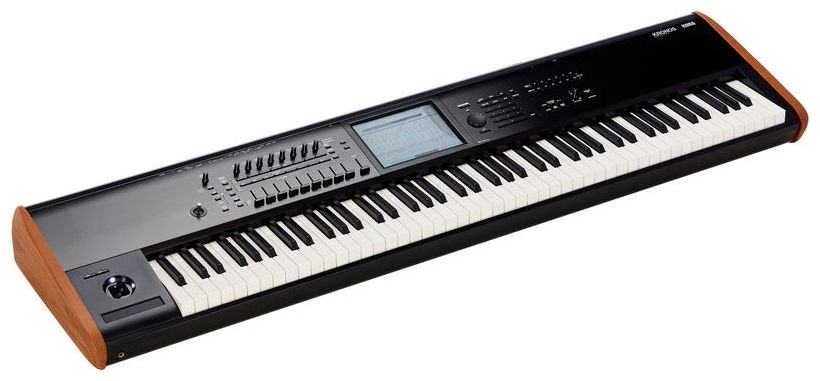


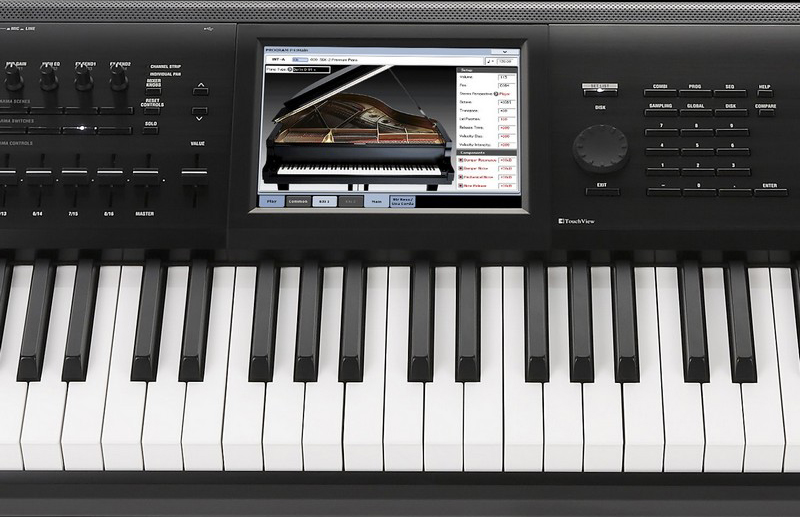
Korg Kronos 88 II
Highly recommended: Korg Kronos is still the master ring to rule them all, despite the new Roland Fantom 8 promising to be much more (but not delivering, in fact being far from delivering anything but high prices for under-engineered features). There is nothing this beast of a workstation cannot do, given the right set-up. Absolutely recommended.
Korg Kronos is a workstation synthesizer with 88 RH3 Graded Hammer Action keys, the most advanced and realistic piano keyboard available from Korg. 9 unique synthesizers, each offering a different sound creation technology. Combinations that use all nine motors together, DVA (Dynamic Voice Allocation) keeps polyphony high. 64Gb internal SSD available. SST – technology that allows the transition from one sound to another, without noise or interruption. The effects processor allows the use of 16 premium effects simultaneously. The on-board sequencer offers 16 MIDI tracks and 16 audio tracks (24-bit, 48 kHz) Open Sampling System – instant sampling, in any way. Advanced karma technology generates an infinite number of musical phrases, effects and backing tracks.
L / MONO outputs, R 1/4 “TRS balanced, 4x individual outputs 1/4” TRS balanced, S / PDIF I / O optical,
Audio inputs: 1 and 2 1/4 “balanced TRS, 2x USB A (for external USB devices) and 1x USB B (MIDI / Audio Interface), MIDI In / Out / Thru,
Connections: Mute pedal, Foot Controller and Pedal Switch,
Built-in storage 62 GB SSD (2.5 “)
Wooden side panels
Dimensions: 1443 x 371 x 148 mm (WxDxH)
Weight: 24.1 kg
Specifications:
- Number of keys: 88
Polyphony: 200 notes
Display: 8 “TFT TouchView
Voices / sounds: 200 sounds
Dimensions: 1443 x 371 x 148 mm
Weight: 24.1 kg

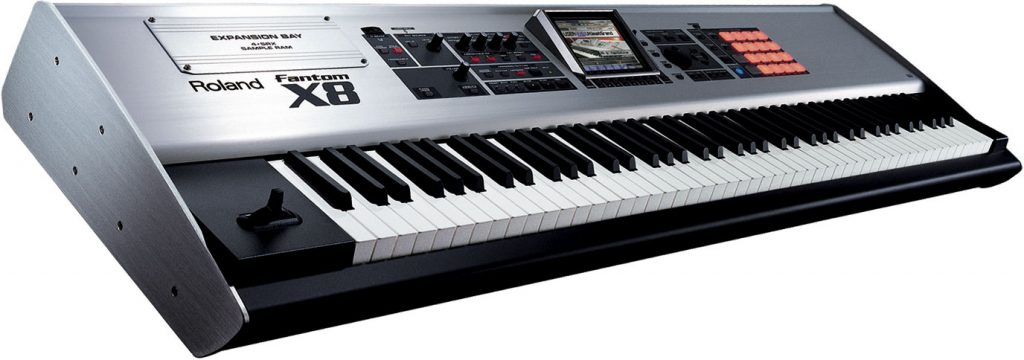


FANTOM-X8
Highly recommended: This is my always go to powerhouse of a workstation which never fails to deliver whatever you throw at it. Absolutely recommended to any musician and the price has come down quite a bit. This is my second unit, although for the first one I paid the full price ($5000). Although the new Fantom 8 is on the market, it pales in comparison to X8 due to the lack of a linear sequencer and many other common-sense features that are missing (undo button). Fantom 8 shoudl have been an X8 on steroids and it far from that.
Fantom X8 – AUDIO TRACK EXPANDED (CONFORMS TO GENERAL MIDI 2) Keyboard88 keys (Progressive Hammer action Mechanism and channel aftertouch) Maximum Polyphony128 voices (shared with the sampling section)PartsPartsStandard Wave Memory128 M bytes (16-bit linear equivalent)Standard Waveforms1,480Preset MemoryPatches: 1,152+ 256 (GM2)User MemoryPatches: 256Card Memory (PC card)Patches: 256EffectsMulti-Effects: 3 systems, 78 typesSampling Data Format16-bit linear (File Type: .WAV/.AIFF)Sampling Frequency44.1 kHz (fixed)Maximum Sampling TimeStandard (32 MB)Number of SamplesUser memory: 2,000Sequencer TracksPhrase tracks (16 MIDI channels per track): 16Sequencer Resolution480 TPQNSequencer Tempo5 – 300Sequencer Note Capacityapprox. 400,000 notesSequencer Song Length9,998 measuresSequencer Recording MethodRealtime recording, Step recordingArpeggiatorPreset: 128Rhythm PatternPreset: 256 (32 groups)Chord MemoryPreset: 64DisplayGraphic 320 x 240 dots backlit LCD (Color)Dynamic Pads16 pads, Velocity and Aftertouch sensitiveControllersPitch Bend/Modulation LeverConnectorsHeadphones JackExpansion SlotsExpansion of waveforms and patchs for the internal sound generatorExternal Storage DevicePC card: 1 slot (supports SmartMedia and CompactFlash using a PC card adapter)Power SupplyAC 117 V, AC 230 V, AC 240 V (50/60 Hz)Power Consumption17WAccessoriesHandbookOptionsWave Expansion Board: SRX SeriesSIZE AND WEIGHT ( DIMENSIONS )Width1,408 mm55-7/16 inchesDepth455 mm17-15/16 inchesHeight165 mm6-1/2 inchesWeight29.5 kg65 lbs. 1 oz.


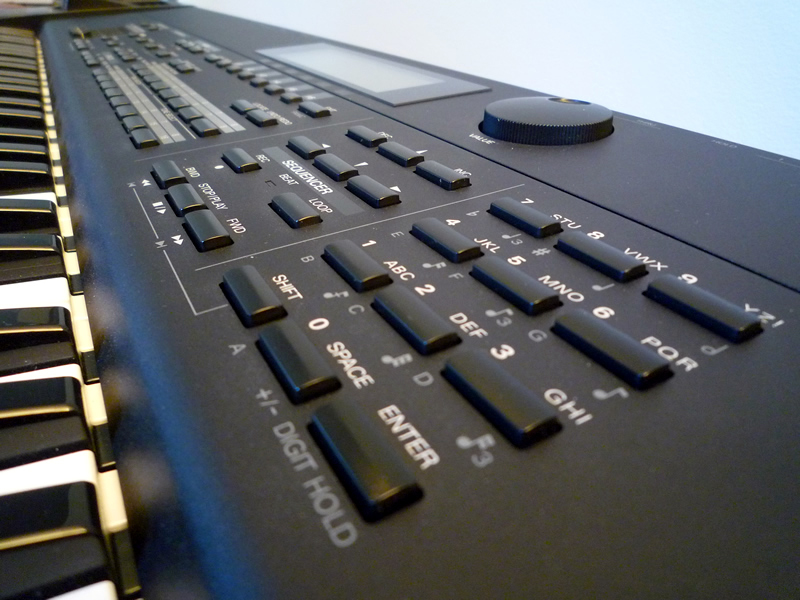
ROLAND XP-80
Highly recommended, but a bit dated: There is no amount of praise that is too much for this amazing workstation which to this day is surprisingly versatile given that the floppy disk unit is replaced with a modern-day USB unit from the aftermarket. The upgrade is well worth it. Absolutely recommended for studio work and, even better, augmented with the JV-1080 sound module and internal sound modules.
- Pro-quality 76-note weighted-action workstation keyboard, velocity/aftertouch-sensitive
- 64-voice polyphony, 16-part multitimbral capabilities
- 8 MB of internal waveform memory; 40 MB and more than 1,500 Patches when fully expanded
- Accommodates up to four SR-JV80-Series expansion boards simultaneously
- 16-track MRC-Pro sequencer with direct-from-disk playback
- New sequencer functions like “non-stop” loop recording for added ease
- Huge 320×80 full-dot backlit LCD for instant verification of all parameters
- Onboard sequencer memory: 100 patterns, one song, 60,000 notes
- Advanced arpeggiator including MIDI sync and guitar strum mode
- Realtime Phrase Sequence (RPS) for on-the-fly triggering
- 42 insert effects: reverb, chorus, delay, ring modulation, distortion, etc.
- Two pairs of independent stereo outputs
- Quick Palette with four assignable sliders; Click out with volume knob
- Collection of dedicated function buttons for increased operational ease
- Note that this product is no longer in production. Similar capabilities can be found in the Fantom workstation.
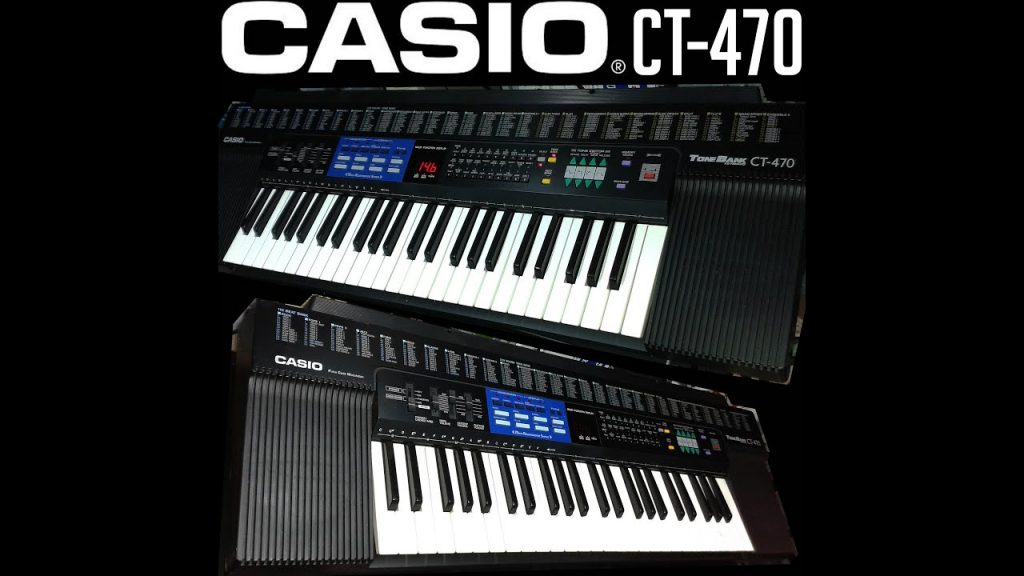


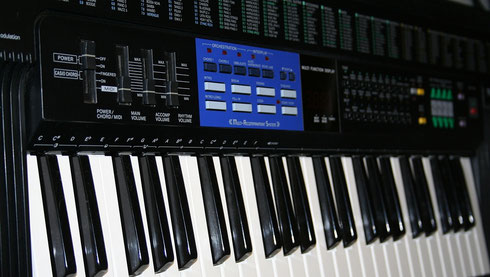
CASIO CT 470
Could be used as a MIDI console: I recently re-acquired this tiny little keyboard I used for writing my first electronic music album and theatre music back in the 90’s. For such a dated and tiny keyboard it can still pack a punch. Although without dynamic response, it is MIDI In/Out compatible, some of the tones are still quite interesting and you cannot find them anywhere else. The rhythm presets are a good start for any aspiring musician and the accompaniment algorythms are fairly ok. It would be interesting for CASIO to provide the sound engine as a software plugin for SAW with added dynamic capabilities and more polyphony. For everything else there is Roland and Korg…
- Number of keys: 49 (although it responds to 5 full octaves with external MIDI controller)
- Polyphony: 12-note (Max.)
- Preset tones: 220
- Auto-rhythms: 110
- Multi-accompaniment system:
- Casio Chord: On/Fingered
- Musical controller: Intro, Intro (long), Break, Fill-in, Ending, Coda
- Orchestration: Chord 1, Chord 2, Obbligato
- Interplay: Auto harmonize, Echo line
- Built-in effects: Stereo delay, Stereo panning
- Real-time memory:up to 1250 notes
- Terminals: Line Out (L/R) [output impedance: 1500 Ohm, output voltage 3V, (RMS) MAX], Sustain jack, Foot volume jack (DC 9V), MIDI (In/Out), headphones jack
- Tuning controls: A4 = 442 Hz +/- 30 cents
- Built-in speakers: 12 cm dia x 2
- Auto power off: Approx. 5 minutes after the last operation
- Power source: 3-way AC/DC power source
- AC: 100, 117, 220, 240V (+/- 10V), 50/90 Hz, with optional AD-5 AC adaptor
- DC: 6 D size (SUM-1R20P) manganese dry batteries. Battery life: approx. 6 hours
- Car battery: Requires optional CA-5 car adaptor
- Power consumption: 7W
- Dimensions: 959(W) x 331(D) x 105(H)mm / 37 ¾”(W) x 13 1/16”(D) x 4 1/8”(H)
- Weight: 5.2 Kg (11.5 lbs), including batteries
- Standard accessories: 6 “D” size batteries, score stand, dust cover


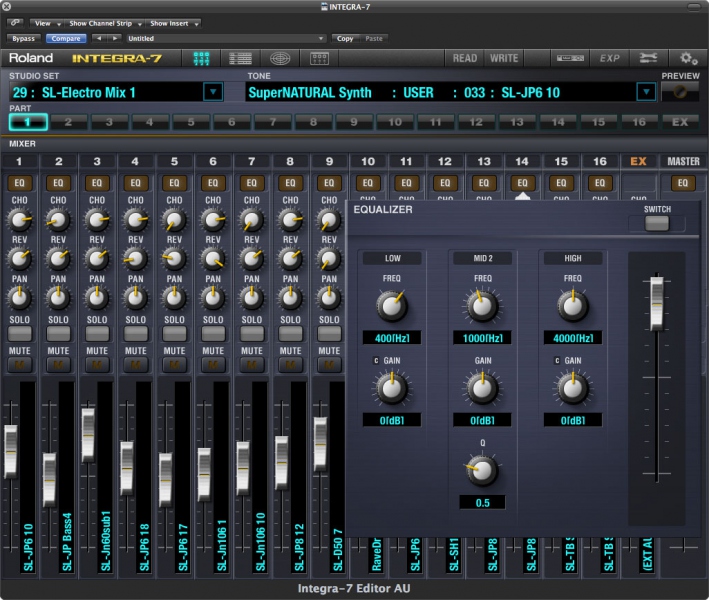
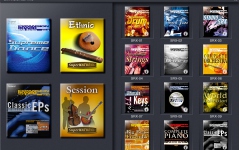
Highly recommended: Roland Integra 7, the sound mode with SuperNATURAL sounds.
From composers to live performers, the vast collection of premium sounds of the INTEGRA-7 module includes all musical genres. In addition to Behavior Modeling technology that activates SuperNATURAL Acoustic and SuperNATURAL Synth sounds, the module contains all the sounds from the archives (libraries) of the 12 SRX expansion board that are widely used by professionals.
New ambience effects are integrated, such as the newly developed reverb and the new Motional Surround, which allows you to take the 16 parts and another external sound source and the 360-degree location of the listener. In this way, an extended and deep sound will result. Combining these incredible sounds with the stability and confidence offered by the hardware’s tactile user interface, INTEGRA-7 is a module that changes the way you approach music production.
- over 6000 sounds
- polyphony: 128 voices
- 16 parts
- tones: SuperNATURAL Acoustic, SuperNATURAL Synth, SuperNATURAL Drum Kit, PCM Synth, PCM Drum Kit, GM2 compatible sounds
- 4 virtual slots that load SRX kits from memory
- effects: 16 multi-effect systems – 67 types; part EQ 16 systems;
- Drum Part COMP + EQ 6 systems; 3 types of Chorus; 6 types of reverb; master EQ
- 256 x 80 LCD display
- ambient effect Motional Surround, 5.1
- connections: headphone output, 4 x mono jack inputs; 2 x outputs A (Jack and XLR); outputs B, C, D (Jacks); coaxial digital output
- MIDI in / Out / Thru
- USB Audio / MIDI port, USB memory
- dimensions: 481 x 262 x 89 mm
- weight: 3.9 kg
- INTEGRA-7 Editor that can be dowloadat for iPad and Motional Surround VSTi Editor for SONAR
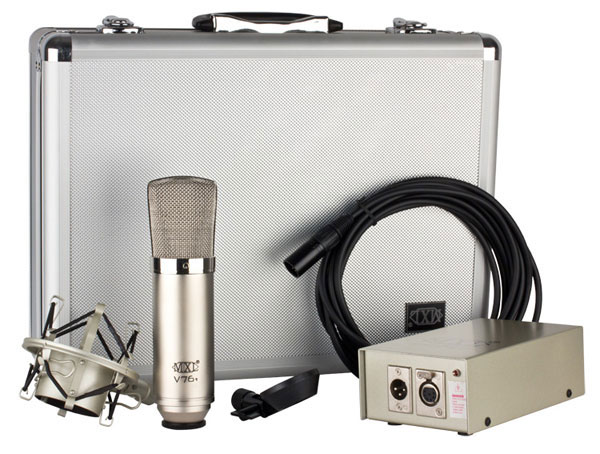
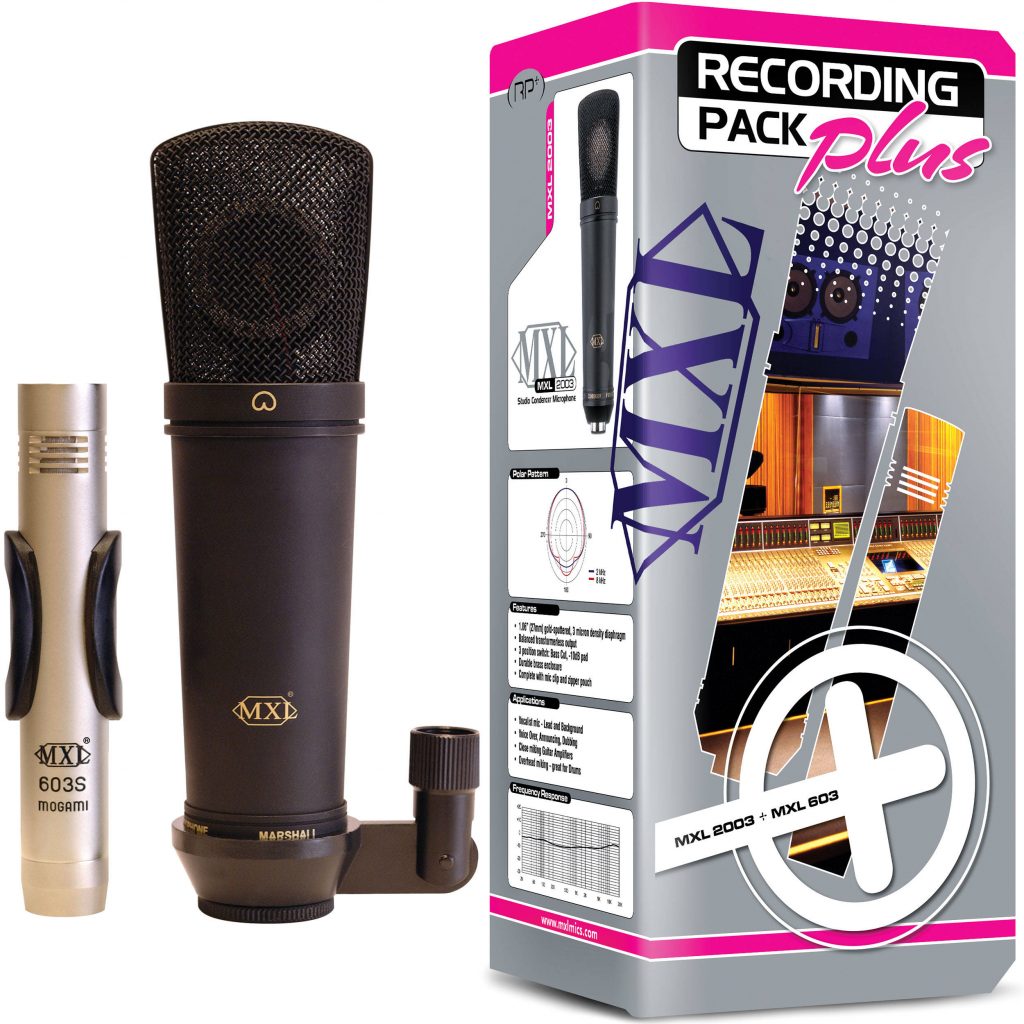

MXL V76T Kit (Phantom Power MXL PS 7)
- One (1) MXL V76T Tube Microphone
- One (1) MXL Power Supply
- One (1) MXL-60 High-Isolation Shock Mount
- One (1) MXL WS-002 Windscreen
- One (1) MXL-V69 15 ft 7-Pin XLR Cable from Mogami
Features:
- Tube mic that enhances vocals with rich harmonics
Balanced output for a smooth, solid midrange
12AT7 dual-triode tube that delivers vintage tone
Great up-front presence that sits well in a mix
Excellent for recording R&B, rock, pop and country
Specifications:
- Type: Vacuum tube condenser
- Capsule size: 1″ (25mm / 6 micron)
- Frequency Response: 30 Hz – 20 kHz
- Polar pattern: Cardioid
- Sensitivity: 38 MV/pa
- Impedance: 200 Ohms
- Max SPL: SPL for .5% THD: 122 dB
- Equivalent Noise: 18 dB (A-weighted IEC 268-4)
- Max SPL for 0.5% THD: 138 dB
- Power Requirements: 120/240V, 50/60hz
- Size: 1.85″x 7″ (48mm x 180mm)
- Weight: 1.15 lbs (525g)
- Metal Finish: Nickel Plated
- 1.06″ (18mm) gold-splattered, 3 micron density diaphragm
- Balanced transformerless output
- 3 positions switch: Bass cut, – 10dB pad
- Durable brass enclosure
- Complete with mic clip and zipper pouch
- Vocalist mic – Lead and background
- voice over, announcing, dubbing
- Close miking guitar amplifiers
- Overhead miking – great for drums
MXL 603S
- 20mm gold-splattered, 6 micron gold diaphragm
- Satin silver finish with etched engravings
- Mic clip included
- Supplied with carrying pouch
- Stringed instruments-violin, cello, bass, guitar
- Piano miking
- Drum overhead
- Percussion
- Room distant miking
Presonus M7
Presonus M7, a condenser-type microphone aimed at musicians and performers who need excellent audio quality on a budget, the M7 is an ideal solution for general recordings, podcasting, singers and beginning musicians. The M7 has a warm frequency response that highlights the human voice.
Thanks to the cardioid polar pattern, the M7 will record a light, strong sound from the front, and will minimize the sounds from the sides and back. Last but not least, the M7 can be powerful – the 134 dB SPL maximum allows the use of the microphone for recordings of electric guitar amplifiers and drums.
- 25 mm / 1 “electric condenser capsule
- cardioid feature
- sensitivity: -38 dB +/- 3 dB (0dB = 1V / Pa at 1kHz)
- frequency range: 20 Hz – 18 kHz
- output impedance: 150Ω +/- 30% (at 1 kHz)
- equivalent noise level: 19 dBA
- maximum sound pressure level: 134 dB (at 1kHz = 1% THD)
- noise signal ratio: 75 dB
- requires Phantom Power + 48V power supply
- accessories included:
- microphone mount
- carrying case
- 3 meter XLR cable
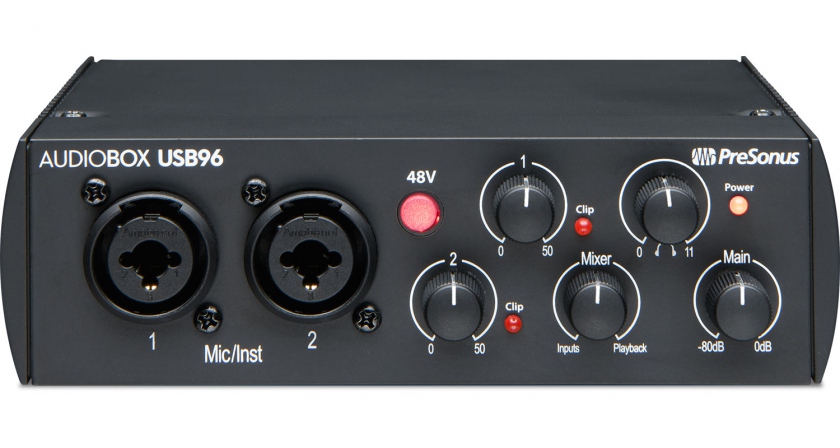
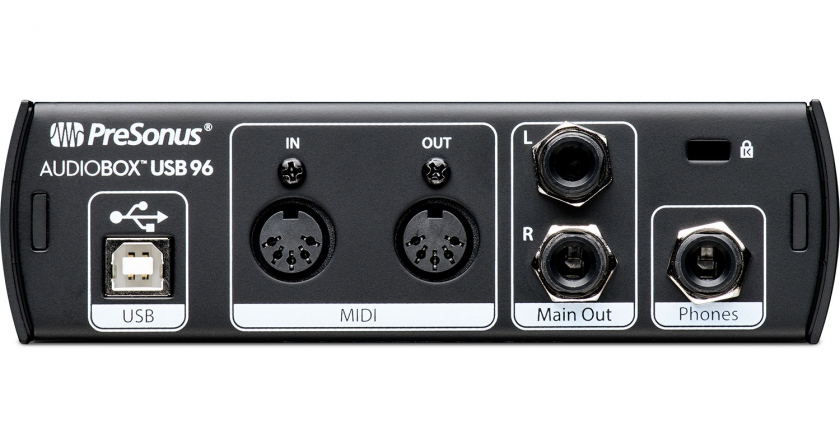
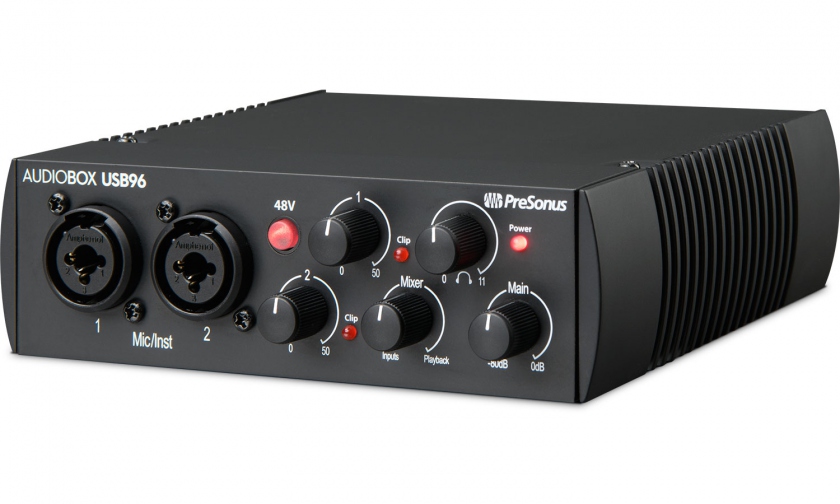
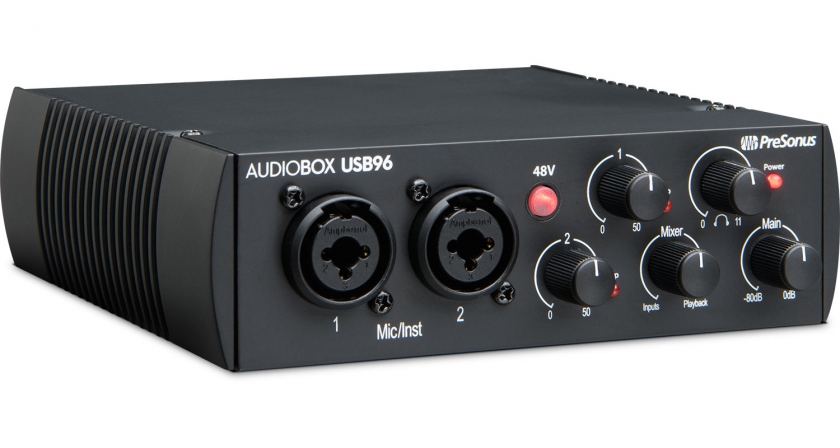
AudioBox USB® 96: 2×2 USB 2.0 Audio Interface
- 2 dual-purpose front-panel input channels, each with high-quality mic preamplifiers
- 2 combo mic/instrument inputs
- Individual channel-trim controls with 0 to +35 dBu mic gain range
- 48V phantom power for condenser microphones
- Mixer control (blends the input signal with the computer playback stream for zero-latency monitoring)
- Headphone jack with level control
- Main-output level control
- LED clip indicator for each channel
- 1 USB 2.0 port
- 2 combo XLR/¼-inch mic/instrument inputs
- 2 balanced ¼-inch main (L/R) line outputs
- 1 stereo ¼-inch headphone output
- MIDI In/Out
- 24-bit resolution and 44.1, 48, 88.2, and 96 kHz sampling rate
- Professional-grade A/D/A converters (+105 dBu dynamic range)
- Zero-latency monitoring via internal mixer
- Compatible with most Mac® and Windows® recording software
- Studio One® Artist
- Studio Magic Software Suite
- 1/3U rack-mountable (with optional 3UMR rack-mounting system)
- Road-rugged construction with all-metal chassis and metal knobs
- Weighs just 5 lbs (2.3 kg)
- Powered via USB bus—no wall wart!
Input/Output
Digitalia
Included Software
Physical
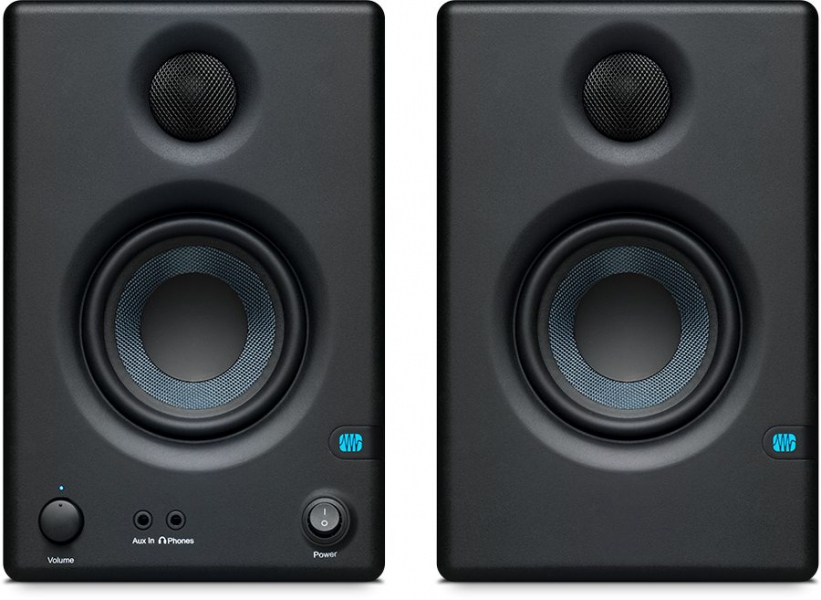
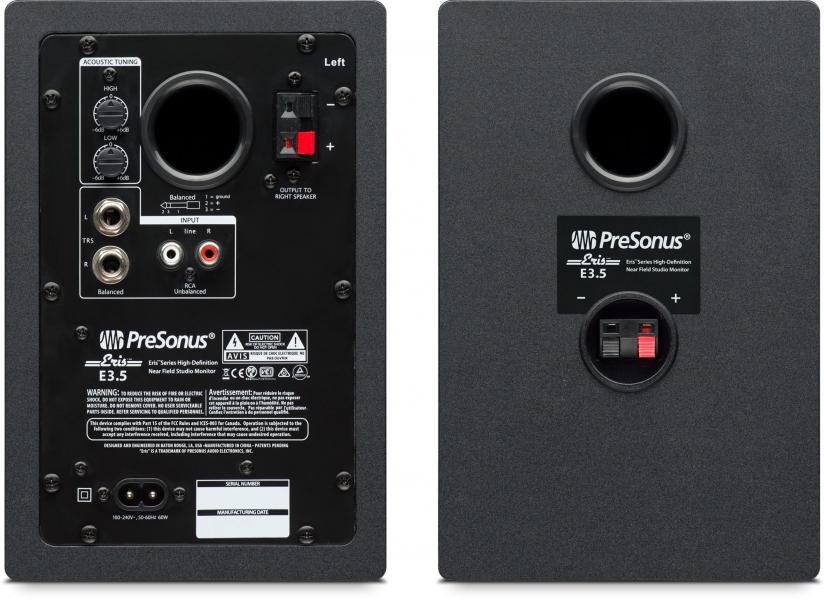

PreSonus Eris E3.5, multimedia speakers, reference monitors with Kevlar speakers, high drivers with silk cap, AB class amplification, professional acoustic controls, solid construction. Recommended for multimedia, desktop, gaming, video production applications.
- frequency response: 80 Hz – 20 kHz
- crossover frequency: 2.8KHz
- power: 25W / monitor
- SPL: 100dB
- Low speaker: 3.5 “Kevlar
- High driver: 1 “, silk cap
- inputs: 2 x TRS 1/4 “balanced, 2 x unbalanced RCA
- outputs: auxiliary 1 x 3.5mm stereo, 1 x 3.5mm headphone output
- high adjustment (± 6 dB, continuous variable)
- low adjustment (± 6 dB, continuous variable)
- protection against electromagnetic interference
- limitation to the maximum level
- high temperature protection
- transient protection
- subsonic filter
- “soft start” feature that eliminates bumps at startup
- LED on / off button
- dimensions / monitor: 141 x 162 x 210 mm
- weight (both monitors): 2.9 kg
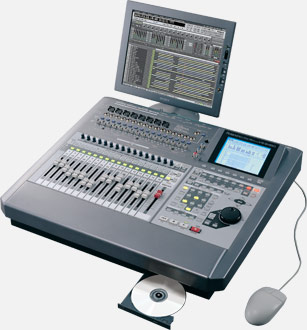
Highly recommended, but dated: The VS-2480DVD
The First V-Studio with DVD Archiving takes Roland’s best-selling 24-track workstation and makes it even better with the addition of a DVD multi-drive for storing up to 4.7GB of data. Naturally, the VS-2480DVD has all the great features of the original—including 64-track digital mixing, motorized faders and VGA monitor support. It’s also compatible with the new VS8F-3 Plug-In Effect Expansion Board, opening up a world of plug-in effects.
- Flagship 24-track digital studio workstation with internal DVD multi-drive
- Store up to 4.7GB of project data on a single DVD-R or DVD-RW disc!
- New 3rd party plug-in support via optional VS8F-3 Plug-In Effect Expansion Board
The VS-2480DVD supports the use of VS Plug-Ins by installing an optional VS8F-3 Plug-In Effect Expansion Board. Up to four boards can be installed, and each is capable of running two high-quality plug-ins from Roland, or optional 3rd party plug-ins from developers like Antares, Universal Audio, Massenburg, McDSP and more. This is the ultimate V-Studio for producers and songwriters alike. ALthough discontinued by Roland, it can still pack a punch!
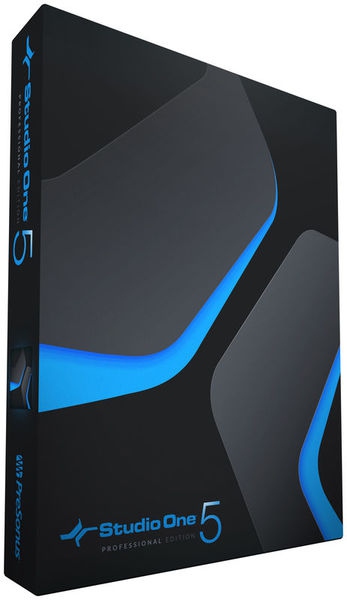



Presonus Studio One 5
Highly recommended: Presonus Studio One 5 Professional – DAW software for recording and editing audio for Mac or PC, with 64-bit processing, unlimited number of tracks, Plug-in Suite, Pitch Correction, and Mastering Tools, Impact XT, electronic license
Version 5 Studio One is a major update and combines the traditional studio recording model with modern beats and groove-oriented music:
The Chord Track function together with Harmonic Editing facilitates the creation of prototypes, thanks to the flexible transport and substitution of keys, chords, modulation for note and audio data.
The Impact drum module has been redesigned and named Impact XT, allowing the creation of complete arrangements.
The Patterns function brings the concept of step-sequencing into the 21st century with percussion and drum parts.
Sample One XT is not just a sampler but allows slicing, dicing and rearranging loops and beats.
Show Page allows you to use backing tracks, virtual instruments and plug-ins in a live concert
The Score View function allows you to enter, edit and view notes using standard notation
Listen Bus function – total control over feedback in the room, completely independent of the main output
Clip Envelope Gain – allows you to adjust the sound without using a compressor / limiter
Support Poly Pressure and MEP
Direct drag and drop functionality
Auxiliary channels allow external audio sources to be fed into the mixer
Extended mixer scenes with selectable parameters
An unlimited number of audio channels, tools and effects, as well as buses
Content browser with music search options and built-in player
Integrate Melodyne 5 Essentials
64-bit floating point WAV support
SoundCloud export and import
Multitrack MIDI editing and Freeze track
Studio One Remote app for iOS and Windows
Virtual tools included: Presence XT with a 14 GB library and support for external libraries, Mai Tai, Mojito,
Impact XT, SampleOne XT; 37 effect plugins such as guitar amplifiers, delay, autofilter, Făt Channel, modulation effects, dynamics, reverb, etc.
AAF support for easy parts switch / work sessions with other DAWs
Support for TCM and MMC
Supported audio formats: WAV, AIFF, FLAC, MP3
Supported plugin formats (64-bit only): VST2 / VST3 / AU
Minimum system requirements: Windows 10 (64-bit), Mac OSX 10.13 (64-bit), Intel Core i3 / AMD A10 CPU, 4 GB RAM, 40 GB storage space, audio interface (ASIO, Windows-Audio, Core- Audio), internet connection. For tutarials, check this Youtube Playlist.
